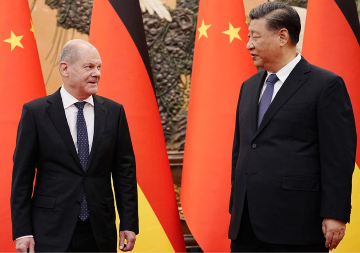
During the last decade, the world has witnessed considerable increase in the number of carbon pricing instruments. Yet, simultaneously, global carbon markets saw a dramatic downturn in the recent past, primarily due to the lack of clear ambitious targets in terms of emissions, reductions and subdued demand for carbon credits. The average price of a UN-certified “tonne of carbon” (Certified Emission Reductions) on the secondary market came down to around US $ 0.19 in 2014, which was more than 50 per cent reduction compared to CER prices in 2013.
In the run up to the final negotiations in Paris in December, 2015 for the new climate agreement, a number of countries pushed the case for the enhanced use of market based approaches. EU, on its part, put significant attention to the role of markets in the negotiations for a new climate agreement, though they had to contend with a group of countries who were ideologically opposed to it. On December 12, 2015, 195 nations agreed on a historic climate change Agreement in Paris for post 2020 actions which has 29 Articles. The Agreement, in its Article 6, provided rooms to nations to pursue the market approaches though the term “markets” did not appear in the Agreement. The Agreement anchors carbon market provisions in broad terms and is a good start for post 2020 actions. The positive point is also that the new mechanisms can build upon the lessons from the Kyoto Protocol mechanisms.
At the end of the day, the vital question we need to examine is what has been anchored in the historic Paris Agreement for carbon markets? Carbon market provisions are anchored in Article 6 of the Paris Agreement. In broad terms, what it states is a new market mechanism to provide opportunities for voluntary cooperation in the implementation of the Nationally Determined Contributions (NDCs) using international transfer of mitigation outcomes. This should be treated as a success story given the fact that in the run up to final negotiations, there was no great expectation with regard to anything related to market provisions in the Agreement. Yet the Paris deal, in clear terms, acknowledged the role of carbon markets for achieving the path of low carbon development and sent significant signal for carbon markets.
Two fundamental outcomes in the whole Paris Agreement add significantly to the momentum are as under. (i) An ambitious global goal, in which nations agreed to hold warming to “well below” 2 degrees Celsius above pre-industrial levels, and “pursue efforts” to limit warming to no more than 1.5 degrees Celsius. (ii) Nations will have to come back to the table every five years to strengthen their individual pledges, in order to achieve their collective goal over time.
Some doubts were raised regarding the ambition levels in an agreement which is essentially voluntary on the part of countries and a bottom up approach centered on NDCs. It is true that the Paris Agreement centers on voluntary, bottom up approach, still it could be considered significantly ambitious as there would be a progression from previous efforts while revisiting the targets by each Party.
In Article 6 of the Paris agreement, there are references to concepts “cooperative approaches”, “internationally transferred mitigation outcomes” and “establishment of a mechanism to produce mitigation outcomes and support sustainable development”. Article 6.1 states – “Parties recognize that some Parties choose to pursue voluntary cooperation in the implementation of their nationally determined contributions to allow for higher ambition in their mitigation and adaptation actions and to promote sustainable development and environmental integrity”. This paves the way for voluntary cooperation by countries in the implementation of their nationally determined contributions. It is also very broad as the language here does not restrict itself to mechanisms under the UNFCCC rather these could cover any “cooperative approaches’’ between Parties.
Article 6.2 states - “Parties shall, where engaging on a voluntary basis in cooperative approaches that involve the use of internationally transferred mitigation outcomes towards nationally determined contributions, promote sustainable development and ensure environmental integrity and transparency, including in governance, and shall apply robust accounting to ensure, inter alia, the avoidance of double counting, consistent with guidance adopted by the Conference of the Parties serving as the meeting of the Parties to the Paris Agreement (CMA)”.
And Article 6.3 states “The use of internationally transferred mitigation outcomes to achieve nationally determined contributions under this Agreement shall be voluntary and authorized by participating Parties”. This essentially means internationally transferred mitigation outcomes (ITMOs) can be produced from any mechanisms when involved in cooperative approaches, while observing the CMA guidance on accounting. Further, what it qualifies as actions are internationally transferred which means domestic actions are not relevant under this unless it is transferred internationally.
Article 6.4 states that “A mechanism to contribute to the mitigation of greenhouse gas emissions and support sustainable development is hereby established under the authority and guidance of the Conference of the Parties serving as the meeting of the Parties to the Paris Agreement for use by Parties on a voluntary basis. It shall be supervised by a body designated by the Conference of the Parties serving as the meeting of the Parties to the Paris Agreement, and shall aim: (a) To promote the mitigation of greenhouse gas emissions while fostering sustainable development; (b) To incentivize and facilitate participation in the mitigation of greenhouse gas emissions by public and private entities authorized by a Party; (c) To contribute to the reduction of emission levels in the host Party, which will benefit from mitigation activities resulting in emission reductions that can also be used by another Party to fulfil its nationally determined contribution; and (d) To deliver an overall mitigation in global emissions”. This makes a reference to the establishment of a mechanism to produce mitigation outcomes and support sustainable development. The new mechanisms are open to Parties, meaning both developed and developing and any Party could be a buyer and seller. In addition, emission reductions occurring from the new mechanism must not be double counted and a standardized carbon unit for transfer purposes is to be put in place. In other words, Parties will have to explore options for ensuring the environmental integrity of transferred units and avoid “double-counting” of emission reductions.
Essentially, these provisions pave the way for a process to be devised for the creation of carbon markets rather than establishing the carbon market itself. In other words, it provides an opportunity for Parties to design carbon markets in the way they desire.
Considerable thought will have to be applied for elaboration of these concepts by Parties. This would involve intense discussion and exchanges. The most important issue in this regard could relate to developing an operational accounting guideline that could answer the basic questions- what to count, how to count and how much to count. Therefore, operationalization of the provisions of carbon markets anchored in Article 6 would entail a great deal of dialogue and consideration among Parties, who will have to find answers to many questions especially those relating to robust accounting and double counting concerns. However, it has the potential to create a vibrant carbon market involving both within UNFCCC and outside.
Success of the process would also depend on enhanced ambition by countries and making requisite domestic policy adjustments given the strong voluntary and bottom up approach envisaged the Agreement. This can be strengthened given that positive point that several INDCs submitted by countries have elements of market approaches in realizing their NDCs.
As of now, increasing numbers of countries are coming up with domestic carbon markets which promise to the world that a viable carbon market would indeed be a reality. However, a lot of work remains to be done, though the Paris Agreement recognizes the role of carbon markets in helping countries achieve their climate targets through the implementation of the carbon markets-related provisions.
The author is Additional Economic Adviser to the Government of India. She focuses on issues related to climate adaptation, the Green Climate Fund, gender and climate change, and climate financing.
The views expressed above belong to the author(s). ORF research and analyses now available on Telegram! Click here to access our curated content — blogs, longforms and interviews.




 PREV
PREV

